Arable Insights Farmers’ strategies to optimise nitrogen use
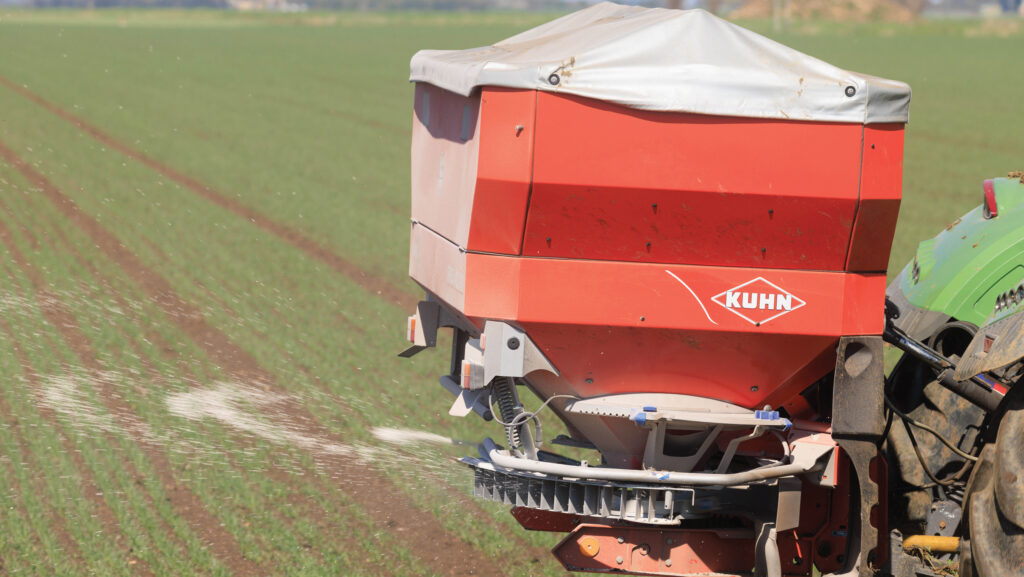 © Tim Scrivener
© Tim Scrivener From organic manures to use of technology and various monitoring approaches, all the growers on the Farmers Weekly Arable Insights Farmer panel have an eye on optimising nutrient use, and especially efficiency of nitrogen applications across their crops this year.
Reductions in applications of bagged nitrogen, compared with the values recommended by AHDB’s Nutrient Management Guide (RB209), are common across the group – perhaps not surprising given their focus on improving soil health.
See also: Soil health pivotal for new Arable Insights Farmers
But with nitrogen prices back to more normal levels after the highs of 2021-22, and experimentation more challenging in the current financial climate, most of the group have found a minimum application level they are comfortable with maintaining, while they explore alternative approaches.
East Midlands: Colin Chappell, Brigg

Colin Chappell © Alan Bennett
A trip to Denmark, when government regulation was restricting nitrogen applications, provided the catalyst for Lincolnshire grower Colin Chappell to aim to reduce N applications to no more than 160kg/ha without reducing yield.
“After that level, you’re often not seeing the same level of return, except in milling wheat where you need to achieve the grain protein spec,” he suggests.
To achieve his goal, he’s trying to improve nitrogen use efficiency. “I’ve been targeting 70-80% efficiency, whereas previously I was at 50-60%.”
Tools such as in-season tissue and sap nutrient analysis from Omex, results from Yara’s handheld N-tester, biomass maps from satellite imagery help with judging crop requirements, alongside wider soil analysis data provided by Crop Dynamics.
“My ethos is to get to 160kg/ha of N with soil applied nitrogen and then use the N-tester to judge how much more is needed,” he says. “160kg/ha of N seems the tipping point before we see big yield losses.”
“Wrapping” liquid urea ammonium nitrate (UAN) with a carbon source to help with uptake into the leaf has improved nitrogen use efficiency by around 10%, he says, allowing him to reduce the total nitrogen applied. Foliar applied nitrogen can also be effective at increasing efficiency.
“Two seasons ago I had fantastic results, again mixed with molasses to prevent scorch, but last year when May was cold, and the crops weren’t growing strongly the approach wasn’t as successful as the nitrogen didn’t get into the plants fast enough to have an effect and we lost yield.”
Foliar applications in June and July to maize “worked wonders”, he says, adding to his theory that plants need to be growing strongly.
By using those tools has allowed him to cut feed wheat to his 160kg/ha of N target, while he averages 218kg/ha of N on Crusoe milling wheat to achieve 12.5-13% grain protein for Warburtons.
But following a disastrous 2024, he’s conscious that he needs to push crops hard this season to achieve a decent margin. “It might mean we go earlier and harder with nitrogen to promote rooting and build early biomass.”
Wales: Richard Anthony, Bridgend

Richard Anthony © Richard Anthony
A long-term contract to take digestate from a plant that processes about two-thirds of the food waste from South Wales is allowing Bridgend-based Richard Anthony to move away almost completely from bagged fertilisers.
Treated as a valuable resource, the business has invested heavily in the infrastructure to store digestate in on-farm lagoons, as well as storage bags with applications through dribble bars on an umbilical system with two tankers.
“It’s a balanced product,” Richard says, and typically contains about 4.7% ammonium nitrogen, 1.9% phosphate and 2.7% potassium, plus other key nutrients, such as sulphur, in regular analysis checks.
On oilseed rape and maize, it is now the only nutrient source applied to the soil. And it has significantly reduced the amount of fertiliser required in winter wheat – only 120 litres/ha of Omex Nitroflo supplying 38kg/ha of N is applied in February to help kick-start growth.
Liquid UAN has been applied with an inhibitor product, but Richard says he’s reviewing whether, or which one, to use due to concerns about their impact on the soil biology, which is a focus for the farm.
The early application is followed by two digestate applications of 20cu m, applying about 188kg/ha of available N – the first of which is in early March, where possible. Application conditions, especially avoiding waterlogged soils, is important to avoid making a mess, Richard says.
“It was very challenging last year to apply at the correct timing and correct soil conditions – so we’re bringing forward timings and will aim to apply all digestate to wheat by the third week of April, and then sample to see if any extra N is required.”
Where extra N is required, foliar nitrogen products will be used.
North: Philip Metcalfe, Caldwell

Philip Metcalfe © Jim Varney
A recognition that nitrous oxide is 300 times more potent a greenhouse gas than carbon dioxide is one driver behind Philip Metcalfe’s continued efforts to reduce reliance on synthetic fertilisers.
But it is a road he’s been travelling for some time, as he’s been sourcing organic manures since returning from college in the 1990s. Straw- or rolled barley-for-muck deals bring in cattle and pig manure, which he then composts to kill weed seeds. Used in front of two-year grass leys, it builds organic matter, improves soil health, and, along with feeding digestate, helps prevent phosphorus and potassium from depleting.
He also uses chicken litter, when available, to provide a more direct source of nutrients.
“It’s harder to source currently with the anaerobic digesters taking it, which we can’t compete with,” Philip says. “But we have enough for next autumn’s OSR establishment.”
Applying chicken litter ahead of oilseed rape, plus using Yara’s N-Sensor has helped reduce applied synthetic fertilisers to a minimum of 150kg/ha of N from a maximum of 250kg/ha, while spring barley only receives 80kg/ha of N compared with historically 140kg/ha.
“Nitrogen use efficiency improves in the spring to about 50% when it is incorporated compared with nearer 30% in the autumn,” he notes.
In winter cereals, he takes a more traditional approach, as the timings don’t work as well for using organic manures. Here, cost is saved by buying distressed (damaged) fertilisers, which the farm mixes to produce liquid urea ammonium sulphate.
“The saving isn’t as big as it was, but you can get up to a 10% discount. But it is important to have a good, trusted supplier.”
South East: Barney Tremaine, Midhurst
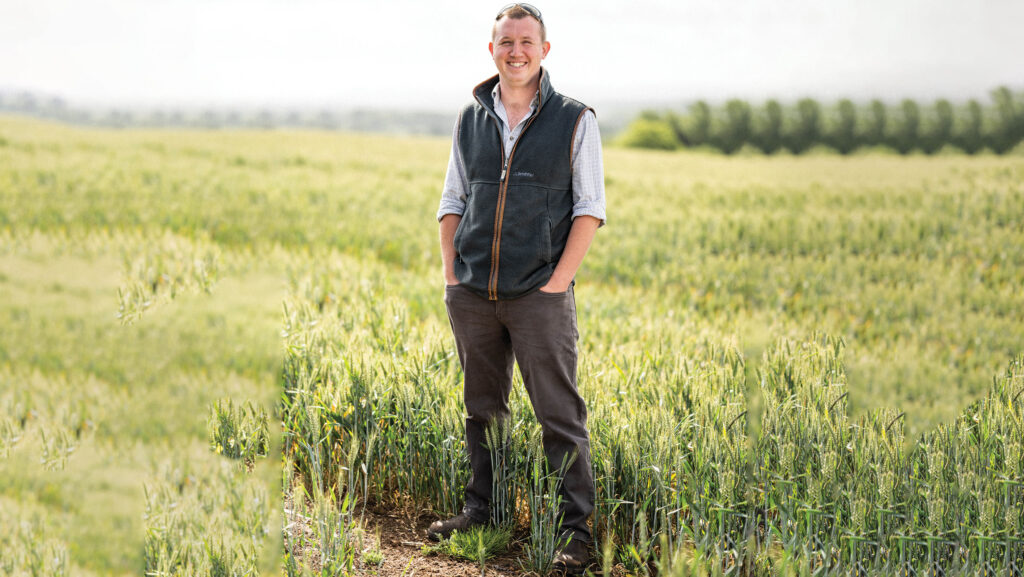
Barney Tremaine © Matt Austin
Reducing reliance on synthetic fertilisers has been a key aim for farm manager Barney Tremaine at Cowdray Home Farm since the spike in fertiliser prices. It was a factor in switching from milling to feed wheat – most of which is used to feed livestock on the farm – while the remainder of the cropping are lower nitrogen input crops, including herbage seed, stubble turnips for seed, and use of stewardship options.
That’s led to an overall cut in synthetic fertiliser on the farm, which this year will be mostly solid ammonium nitrate based on price, with some use of foliar urea polymer products or on-farm melted urea.
Melted urea has a lower cost at £20/ha compared with £52/ha for the bought-in foliar urea. It is also more flexible for mixing in other ingredients, such as fish hydrolysate, fulvic acid and trace elements, depending on results from leaf or sap analysis.
“But the amount of nitrogen is halved and you’re not drip-feeding, so requires multiple applications. We’ve learned application conditions and what you buffer it with to reduce scorch are important,” Barney says.
“We’ll continue to trial, but will hedge our bets this year. Last year, our best crops were the ones with higher amounts of soil applied, whereas the previous year the best margins were where we pushed the foliar harder.”
Another complication is anything grown to feed the dairy cows can only be fertilised using an M&S specified green fertiliser produced by Fertiberia, made with green hydrogen and low carbon ammonia. “It’s a calcium ammonium nitrate product with 27% nitrogen plus sulphur.
Depending on prices, use of that type of product could increase if, and when, the carbon tax is introduced, alongside a reduction in soil-applied fertiliser and an increased use of organic manures.
“We’re pushing animal numbers up, so we’re looking at a more strategic use of slurry such as putting in field silos so we can umbilical in-crop more widely. I’m also in talks with anaerobic digestion plants – so if we put stores in they’ll guarantee supply, which will reduce our fertiliser use.”
Scotland: Doug Christie, Leven
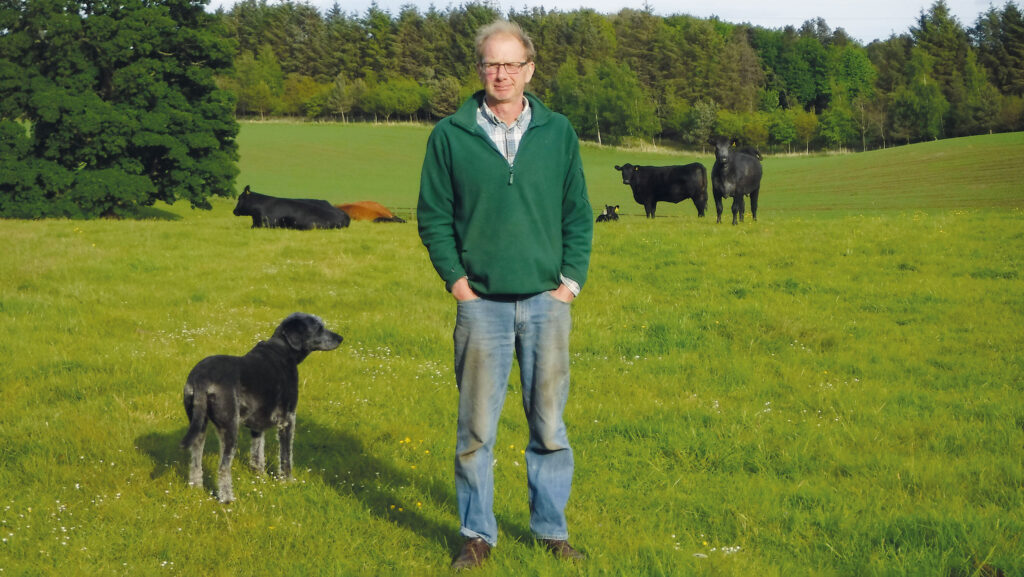
Doug Christie © Doug Christie
Fife grower Doug Christie has reduced nitrogen use through growing more pulses in the rotation, and increasing the grass/clover area on the farm.
“If I grow legumes once every three or four years, I can cut nitrogen by roughly one-third across the farm.”
But grain nutrient analysis suggests he might be under-applying nitrogen to his wheat crops. “The YEN benchmark for grain nitrogen as a percent of dry matter is 2.06. I was at 1.36%, which is embarrassingly low, although all the other nutrients were fine. The year before was 1.63%.
“But I’m not [applying] less than anybody else – I’m not down to a 100kg/ha of N. I use RB209 to judge need, and typically apply 160-180kg/ha of N.”
That has led Doug to wonder whether he’s seeing a similar phenomenon to some other long-term no-till growers, where it seems you need to apply more nitrogen to get the same yields as previously.
“I’m going to use a mixed approach this year, with half the wheat receiving nitrogen based on RB209, and half based on the grain sampling analysis. I haven’t decided how much more I will apply yet, but it could be closer to 220kg/ha of N.”
East Anglia: Jo Franklin, Westmill
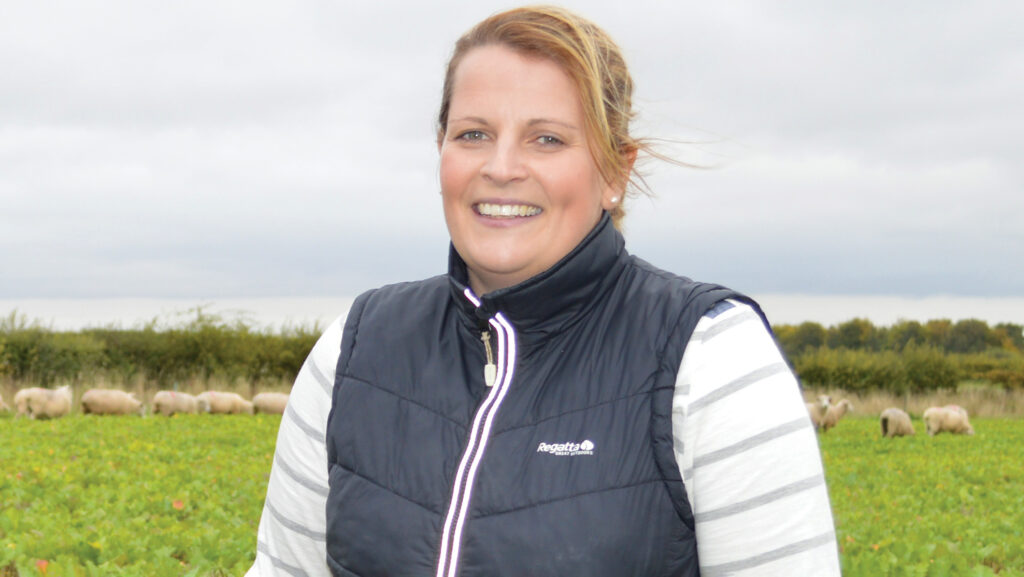
Jo Franklin © MAG/David Jones
A combination of an endophytic seed treatment, lots of monitoring, and little-and-often liquid fertiliser and foliar nitrogen applications is helping Hertfordshire grower Jo Franklin optimise nitrogen use and minimise losses.
“The Tiros seed treatment is a scavenger, giving an early boost worth about 20-30kg/ha of N you wouldn’t get otherwise. A previous crop of peas is worth another 30kg/ha of N, and if the crop is forward, and we graze it with sheep, that takes another 20kg/ha of N out of the equation.”
A realistic assessment of wheat yield of 7-8t/ha in most years is to fertilise accordingly, with a little-and-often approach improving nitrogen use efficiency, again allowing doses to be reduced, she says.
“A plant can only takes up so many kilos of nitrogen per day, so if you put more on, you are risking it volatilising or being washed away.”
The approach – which includes monitoring regularly with an N-Sensor – means applied total N is anything from 75kg/ha of N up to 150kg/ha of N for biscuit wheat varieties.
For spring crops, an opposite approach is taken where all the urea nitrogen is applied at drilling down the spout. “You have moisture at drilling, which will activate the urea. We found, in too many years, it goes hot and dry and the spring crop isn’t going to take it up.”
Growing overwintered cover crops every other year, grazed with sheep, also takes quite a big chunk off spring crop requirements, Jo adds.
South Midlands: Charles Paynter, Yielden
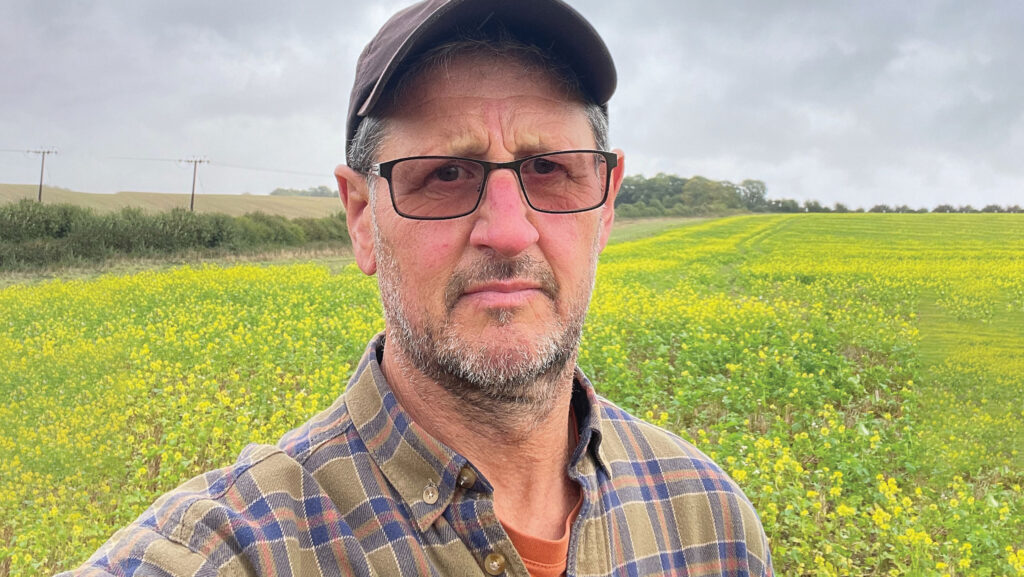
© Supplied by Charles Paynter
High fertiliser prices have been the focus for Bedfordshire grower Charles Paynter. He has adapted an Indigro nitrogen cost and use efficiency spreadsheet to help work out return on expenditure to optimise applications.
“It calculates returns using a nitrogen response curve, and different prices of fertiliser and wheat,” he explains. “You can isolate those things and play around to see best return. What I discovered was it’s a no-brainer to use up to 150kg/ha of N for winter wheat, but once you get over [this], it becomes more marginal.”
Applications are adjusted to take account of tested residual soil nitrogen supplies, with Charles anticipating levels nearer to the 40kg/ha of N of last year, than the 60-80kg/ha of N of the previous season.
“We’re likely to use about 170-180kg/ha of N this year because we saw a yield reduction when we throttled back to 150kg/ha of N and how it works out with buying multiples of lorry loads.
“That’s still quite a lot lower than the 220-240kg/ha of N from a few years ago.”
He would like to swap out some prilled fertiliser in favour of foliar feeding. But with most inputs applied by contractors, testing that approach is not straightforward practically or financially with applications costing £15/ha.
However, he’s planning to buy a cheap second-hand 18m sprayer, which will allow him to experiment with foliar products, plus other additions such as humic or fulvic acid.
South West: John Farrington, Wiveliscombe
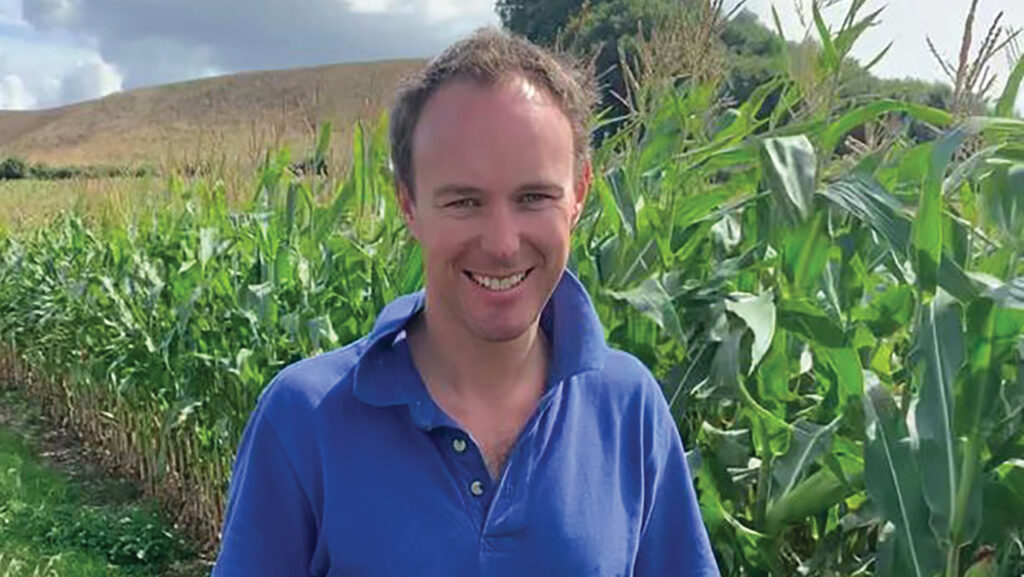
© John Farrington
The little-and-often approach using both granular and liquid forms of fertiliser is John Farrington’s main tactic to improve nitrogen use efficiency.
Switching to liquid applications, with a carbon source for later applications, has improved application accuracy on the typically smaller fields found in the west country and enhanced yields on the outside of headlands.
Historically, total nitrogen on wheat was about 220kg/ha of N, but that’s been cut to about 180kg/ha of N. A big challenge is working out how far to cut without impacting yield – small trials have suggested going much lower than 180kg/ha of N currently wouldn’t be wise.
“But using smaller doses in more passes allows us to play the weather a bit better if you need to [increase] or lower a dose.”
This year, he’s also going to trial using foliar products in small areas after a similar trial last season was inconclusive. He also hopes to make better use of sap analysis from Dutch firm NovaCropControl to understand in-season nutrient use within his crops.

